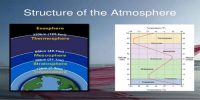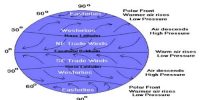Causes of Climate Change
The causes of climate change are many. They can be grouped into astronomical and terrestrial causes. The astronomical causes are the changes in solar output associated with sunspot activities. Sunspots are dark and cooler patches on the sun which increase and decrease in a cyclical manner. According to some meteorologists, when the numbers of sunspots increase, cooler and wetter weather, and greater storminess occur. A decrease in sunspot numbers is associated with warm and drier conditions. Yet, these findings are not statistically significant.
Another astronomical theory is Milankovitch oscillations, which infer cycles in the variations in the earth’s orbital characteristics around the sun, the wobbling of the earth and the changes in the earth’s axial tilt. All these alter the amount of insolation received from the sun, which in turn, might have a bearing on the climate.
Many factors, both natural and human, can cause changes in Earth’s energy balance, including:
- Variations in the sun’s energy reaching Earth
- Changes in the reflectivity of Earth’s atmosphere and surface
- Changes in the greenhouse effect, which affects the amount of heat retained by Earth’s atmosphere
These factors have caused Earth’s climate to change many times.
Volcanism is considered as another cause for climate change. Volcanic eruption throws up lots of aerosols into the atmosphere. These aerosols remain in the atmosphere for a considerable period of time reducing the sun’s radiation reaching the Earth’s surface. After the recent Pinatoba and El Cion volcanic eruptions, the average temperature of the earth fell to some extent for some years.
The most important anthropogenic effect on the climate is the increasing trend in the concentration of greenhouse gases in the atmosphere which is likely to cause global warming.















